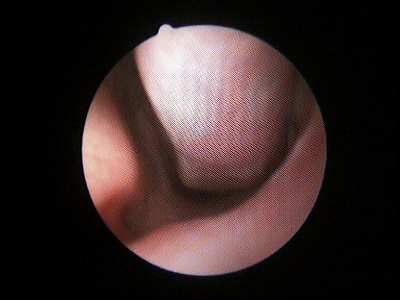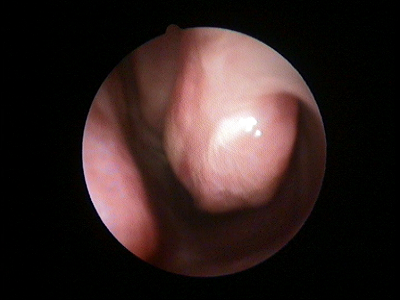What is allergic rhinitis?
Allergic rhinitis is the most common allergy in Singapore and worldwide. It is caused by the body’s hypersensitive reaction when it comes into contact with an offending protein (also known as the allergen), resulting in inflammation of the mucosal lining of the nasal airways. Common allergens in Singapore include house dust mites, animal hair, plant pollen, outdoor air pollution, cigarette smoke and food (such as milk, wheat, corn, yeast, egg and soy). Hay fever (or seasonal allergic rhinitis) is not common as we do not experience the change in seasons unlike in temperate countries.
The most common symptoms of allergic rhinitis include sneezing, nasal itching, blocked and runny nose, and red and itchy eyes. It may be associated with other allergies such as eczema and asthma.
What are dust mites?
Dust mites are bugs that are invisible to the naked eye. They feed on flakes of dead skin that humans and animals regularly shed in carpets, beds, and furniture. Their growth is maximal in hot and humid conditions. Dust mites are the number one cause of allergic rhinitis in our local context.
What tests are necessary if I have allergic rhinitis?
Your ENT doctor will usually take a full history and do a complete examination of the ears, nose, throat and neck. The skin prick test is done to confirm the diagnosis of allergy. This is an inexpensive test that can be performed safely in the clinic to detect specific allergens an individual is susceptible to.
For patients who are not suitable for skin prick test, a blood test is available. This is called the Radioallergosorbent Test (RAST). This test measures the level of antibody in the blood against each specific allergen.
What can be done to control allergic rhinitis?
Once the allergen is identified, several approaches can be taken to control the symptoms of allergic rhinitis. This includes allergen avoidance, medications and less commonly, immunotherapy.
Ideally, the nasal allergy should be controlled by eliminating the allergen(s). Although complete avoidance of the allergen may not be possible, specific measures can be undertaken to reduce the allergen load to the lowest level possible.
Medications include anti-histamines, decongestants to relieve nasal blockage and nasal steroid sprays. Anti-histamines may have a sedative effect, hence operating machinery and driving should be best avoided. Nasal steroid sprays are given to reduce the inflammation of the mucosal lining of the nasal airways. Over a short period they are unlikely to produce side effects. Sometimes, a short burst of oral steroids for 7 – 10 days is necessary to control the symptoms.
Immunotherapy aims to reduce the sensitivity of the body’s immune system to the allergens. This is achieved by intentional exposure to regular, progressive doses of the same specific allergen that is responsible for producing symptoms, ultimately resulting in down-regulation of the immune response. Immunotherapy is expensive and may take about 3 – 5 years to be effective, hence it is not commonly used.
How do I avoid dust mites?
To reduce the load of dust mites at home, special allergen-proof covers for pillows and mattresses can be used if possible. Otherwise, use blankets, pillow cases and bed sheets made only of synthetic and hypoallergenic materials. Try to avoid using feather-filled pillows. In addition, wash all bed linens in hot water (at least 130 degrees) every two weeks. Minimise or avoid keeping stuffed toys on the bed!
Opt for bare or hardwood floors as they are easy to clean and dust mites don’t live on hard wood or tiles. Try to avoid having carpets in the house if possible; otherwise make sure to treat them with products that kill dust mites. Choose leather furniture over upholstered ones, and choose blinds or washable curtains over heavy drapery.
Once a week, vacuum the entire house thoroughly using a certified high-efficiency particulate air (HEPA) vacuum cleaner. This is a filter that is capable of capturing particles of 0.3 microns with 99.97% efficiency.
Can surgery help to cure allergic rhinitis?
Since allergic rhinitis is caused by the patient’s hypersensitive reaction to the offending allergens, surgery will not be able to ‘cure’ this condition. However it can be very useful under certain situations. In patients with persistently enlarged inferior turbinates causing complete blockage of the nose, a simple procedure known as radiofrequency volume reduction of the inferior turbinates (RAVOR) can achieve a long-term reduction of the swelling with relief of the nasal blockage symptoms. This procedure is done under local anaesthesia in the clinic setting and only takes 10-15 minutes. If the patient also has a deviated nasal septum causing persistent one-sided nasal obstruction, surgery in the form of a septoplasty to correct the deviated bone can also help to alleviate the symptoms.
Endoscopic view of swollen left inferior turbinate causing narrowing of the nasal passage

Endoscopic view of left inferior turbinate post-RAVOR

Please contact us if you have further enquiry on Nasal Allergies or Request an appointment to see our ENT specialist
